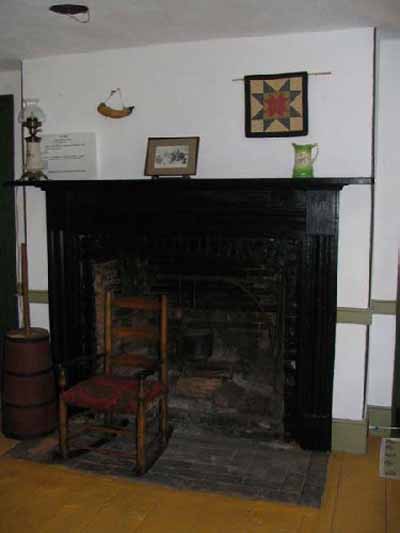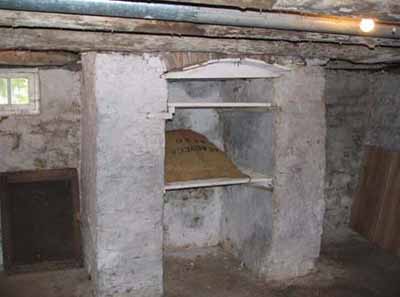Griffin House National Historic Site

© Parks Canada, M D'Abramo, 2006
Griffin House was designated a national historic site in 2007.
Commemorative plaque: 733 Mineral Springs Road, Hamilton, OntarioFootnote 1
Built in 1827, this home is associated with Black settlement in British North America during the first half of the 19th century. Purchased in 1834 by Enerals Griffin, a Black immigrant from Virginia, it remained in his family for 154 years. More elaborate than most residences of Black settlers in this period and situated within a predominantly Euro-Canadian area rather than in an organized refugee community in southwestern Ontario, this house conveys the diversity of the Black settler experience. Griffin House is also a rare surviving example of residential vernacular architecture typical of Upper Canada in the early 19th century.
Description of historic place

© Parks Canada, M D'Abramo, 2006
Griffin House National Historic Site is a modest one-and-one-half-storey house located atop a hill overlooking the Dundas Valley in Ancaster Township, in what is now the City of Hamilton. Built around 1827, the dwelling is of simple Georgian-inspired design typical of a 19th-century Upper Canadian four-room house. It has a front-sloping gable roof, and is clad in unfinished horizontal clapboards. Official recognition refers to the building and the land surrounding the house where outside limits for archaeological excavations were surveyed and identified as “archaeologically sensitive.”
Heritage value
Griffin House was designated a national historic site in 2007 because:
- the house, owned by Enerals Griffin, a Black immigrant from Virginia who settled here in 1834, is associated with Black settlement in British North America during the first half of the 19th century. It is also a rare surviving example of residential vernacular architecture typical in Upper Canada in the early 19th century; and,
- the house conveys the complexity of the Black experience: it is a more elaborate dwelling than was common among Black refugees, and it is situated within a predominantly Euro-Canadian community in south-central Ontario rather than a planned refugee settlement in south-western Ontario. The house remained in the family for 154 years.
A major influx of Black immigrants made their way to pre-Confederation Canada during the 19th century along the Underground Railroad to obtain freedom from enslavement and the restrictive laws for the Black population in the United States. Enerals Griffin was among the Black settlers who chose to come to Canada, arriving at Niagara with his wife in 1829. Griffin bought the former Lawrason house and fifty acres (202 342.8 metres squared) of land from George Hogeboom in 1834. Griffin House is a typical, but now rare surviving example of a four-room house found throughout Upper Canada in this period. It has undergone major restorations between 1922 and 1994 to return the house to its 1830-1850 appearance.

© Parks Canada, M D'Abramo, 2006
In addition to its architectural value, Griffin House is historically significant because it conveys the complexity of the Black experience in British North America during the early years of the Underground Railroad, in that it represents a more elaborate dwelling than was common among Black refugees. The location of Griffin House in Ancaster township (now the city of Hamilton) also contributes to the historical value of the site. Immigrants in the 19th century were attracted to the predominantly Euro-Canadian community for its labour market and agricultural potential instead of the planned refugee settlements in south-western Ontario. Griffin House represents the permanent, long-term settlement of Black immigrants in what is now Canada, for the house stayed in the family's possession through the generations until 1988, when it was sold to the Hamilton Conservation Authority.
Source: Historic Sites and Monuments Board of Canada, Minutes, July 2007.
The National Program of Historical Commemoration relies on the participation of Canadians in the identification of places, events and persons of national historic significance. Any member of the public can nominate a topic for consideration by the Historic Sites and Monuments Board of Canada.
- Date modified :